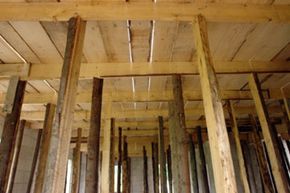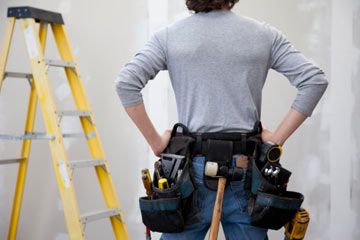On a day-to-day basis, if we think about walls at all, most of us probably think more about the privacy aspect (as in, "Wow, I'm sure glad my neighbors didn't see my Aerosmith lip-synching session") than the fact that they're keeping the ceiling upright. But did you know that not all walls actually provide structural support? In fact, in many cases, you could completely knock down all of your home's partition walls -- walls that divide space without supporting any of the load of the structure -- without having to run for cover [source: Leelanau Log Home Company].
However, there's one kind of wall that can bring shingles raining down into your living room if you're not careful: a load-bearing wall (also known as a bearing wall), which supports the building by transferring its weight into the ground [source: Mosby Building Arts]. If you want to remove a load-bearing wall, though, you're not out of luck -- you just have to take some extra precautions.
Advertisement
Before you go knocking down walls willy-nilly, determining whether they're simple partition walls or they bear the load of your home is key. In most cases, you can usually assume that at least two external walls are load-bearing -- either in the front and back, or left and right sides -- depending on the design of the building. Interior walls that run parallel to the peak of a roof are also often crucial in supporting the weight of the structure [source: Carter].
In a multi-story building, load-bearing walls must be stacked directly above one another in order to effectively provide support, so it's relatively safe to assume that you shouldn't knock down stacked walls without some serious advance planning [source: Wagner]. Platform framing, the most common method of structural framing since the 1930s, allows a structure to be built one level at a time -- which makes it much easier to stack load-bearing walls for the most effective transfer of weight [source: Mattson Macdonald Young].
You've determined that the wall you want to remove is load-bearing -- so now what? We'll explore the nitty-gritty of bearing wall removal on the next page.
Advertisement



